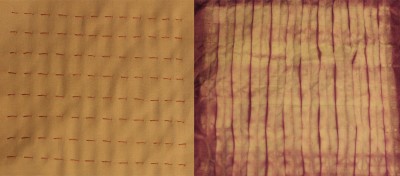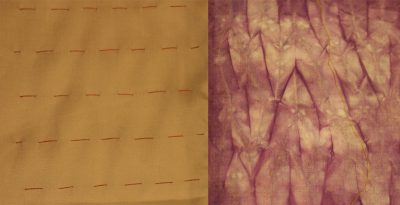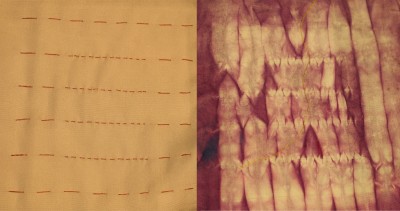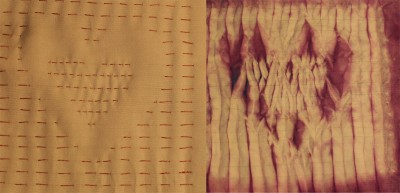I have now completed the first round of dyeing (fiber-reactive). It was magical. I started with fabric that was nearly white, like this:
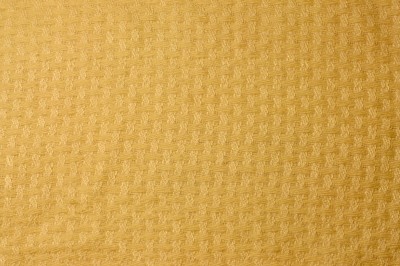
…and when I dyed it, like magic, a rich, beautiful pattern appeared!
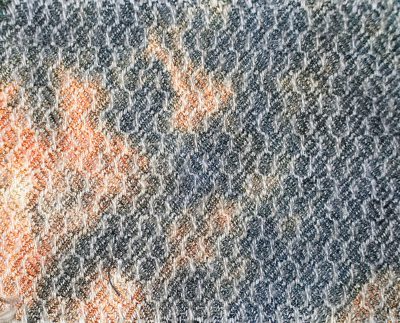
Here are a few more swatches:
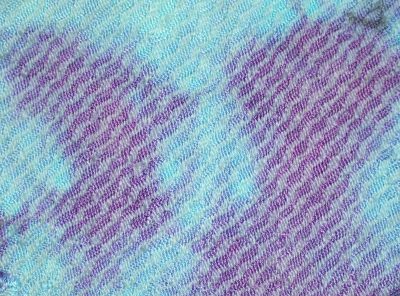
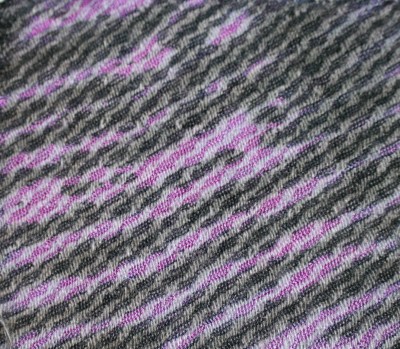
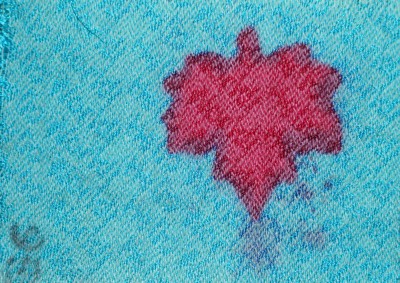
(Yes, you are reading “Hello World” in that swatch. What can I say, I’m a geek!)
Keep in mind that these are only half the story. I will be overdyeing with acid dyes later this week, to dye the other half of the fabric – and am eager to see what happens!
Meanwhile, in shibori workshop-land, I have completed some more samples of stitched shibori:
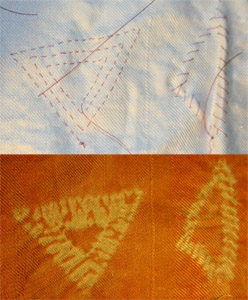
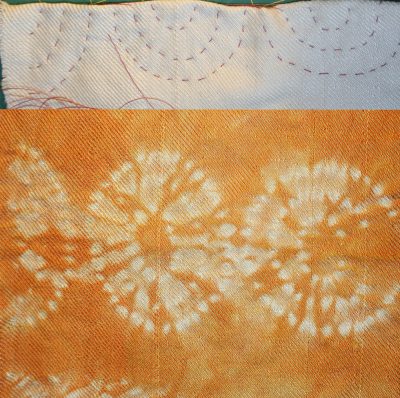
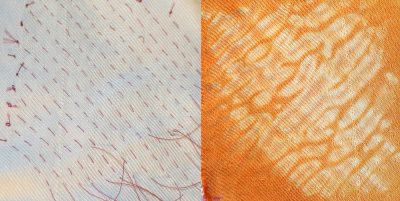
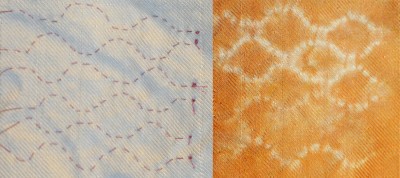
The fabric in the stitched shibori, by the way, is more of the alpaca/tencel fabric, this time dyed in rust brown and gold, which “averages out” to a rust orange. However, the fabric has more depth and variation than a single-fiber fabric…perhaps not obvious in the photo, but pretty neat in person.
This week will be a fairly quiet week, as the cotton-wrapped polyester thread I ordered (from Atlanta Thread) will take several days to arrive. I plan to finish the acid dyeing, which will take a few days, and take some quiet time, cleaning up the studio and maybe reading a few of those books I have piled up!
